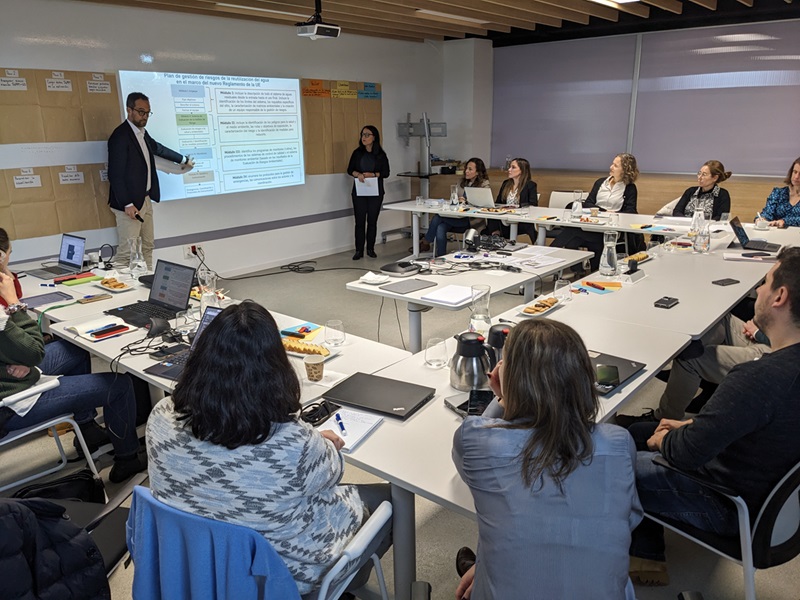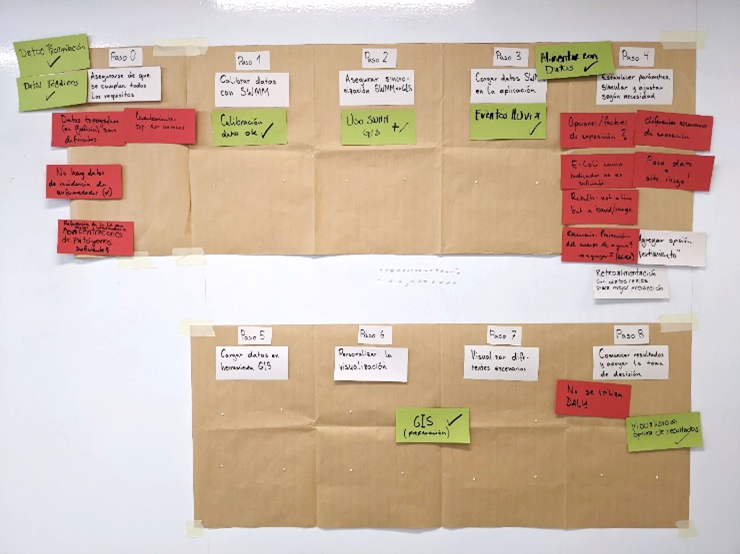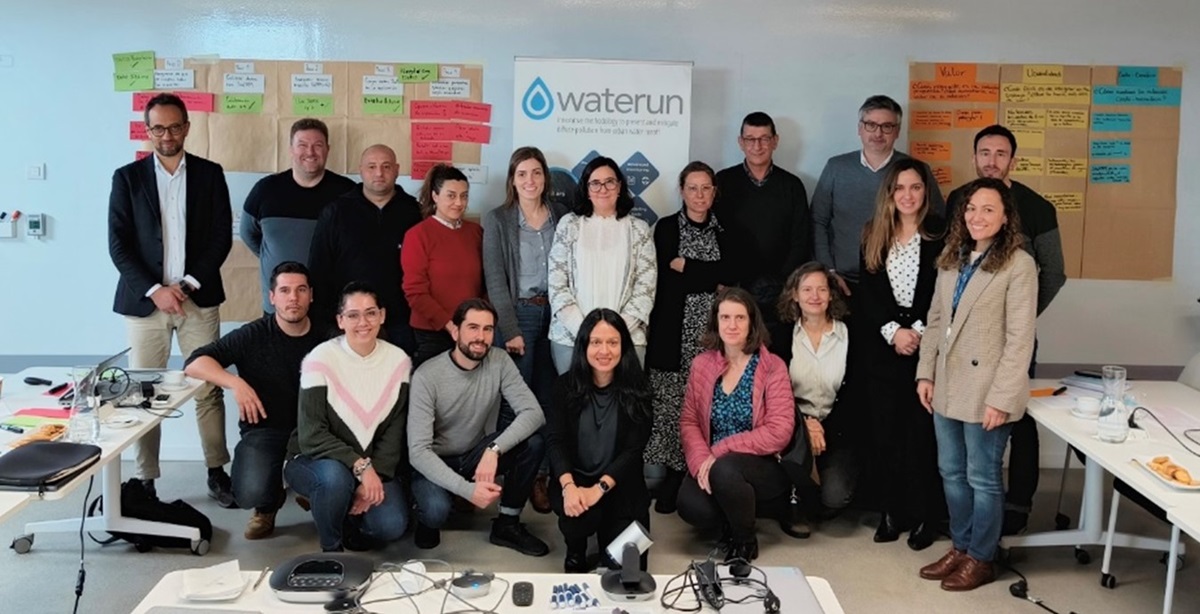To guarantee future market acceptance and effectively incorporate real-world considerations during the development of WATERUN solutions, the initiative actively involves key stakeholders from the project's inception. Against this backdrop, the WATERUN team invited local stakeholders in Santiago de Compostela to take a deep dive into one of the key WATERUN outputs: The OER4 Risk-based DSS for UWR management developed by the Polytechnic University of the Marche UNIVPM.
This tool is a decision support system based on health and environmental risk related to different scenarios of stormwater reuse. During the workshop, a collaborative analysis was facilitated using a method called "user journey map" applied to the UNIVPM DSS tool to achieve the following objectives:
a) introduce the tool to potential future users,
b) gather feedback on the functionality of the tool from stakeholders, and
c) obtain feedback on the value, usability, and cost-effectiveness of the tool from the participants' perspective.

Figure 1 Francisco Fatone (UNIVPM) sharing insights on the archicture of the DSS tool with local stakeholders
in Santiago de Compostela
The WATERUN “user journey”
During the meeting, several steps were undertaken: First, Francesco Fatone presented the UNIVPM DSS tool. Following this, Lucia de Simoni provided a presentation on the Cupra Marittima Case Study. Subsequently, participants engaged in a collaborative analysis of the "user journey" associated with the UNIVPM DSS tool. Lastly, there was a final discussion focusing on the value, usability, and cost-effectiveness of the tool from the participants' viewpoint.
The "user journey map" is a visualization tool used to depict the experiences and interactions of users with a product or service over time. It typically outlines the steps or stages a user goes through when engaging with a product. This map helps designers and developers understand the user's perspective, including their needs, emotions, and pain points at each stage of the journey. It can be used to identify areas for improvement and to ensure that the product or service meets user expectations effectively. In the context of the Santiago de Compostela meeting, this tool was utilized to analyse the applicability of the DSS tool in the local context. Participants were systematically guided through the application of the UNIVPM decision support tool. Participants were encouraged to share their thoughts and concerns regarding the various requirements, functionalities, and capabilities of the tools. Participants' feedback was mapped onto a generic step-by-step map to capture key comments, concerns, and points raised by the participants corresponding to each step.

Figure 2 The result of the user journey mapping exercise
Insights from the workshop and next steps
In summary, participants emphasized the value of the tool in prioritizing intervention points and stressed the importance of clearly outlining its exact use case and/or complementarity to existing tools. The adequacy of the tool, considering the scope and integration of readily available applications such as SWMM or GIS-based visualization tools, was deemed high. The relevance of the tool could be validated, and no fundamental criticisms or essential questions were raised. Most queries and suggestions focused on relatively specific aspects of the tool, which can be addressed through adjustments in its design or through improved communication strategies in its application.
The collected feedback will be utilized and contribute to the tool development process throughout the project duration. The WATERUN project spans four years and will conclude in 2026. Until then, four more sessions of the Santiago de Compostela Co-Creation Committee will be organized to ensure that WATERUN products are continuously optimized in terms of relevance, ease of use, and utility. The next event will be organized in October/November 2024. Stakeholders will be informed in due course about the exact date and agenda.

Figure 3 Participants of the February Co-Creation Committee meeting in Santiago de Compostela
Find out more on: https://www.waterun.eu/
Authors: Simon Joncourt, seecon gmbh, simon.joncourt@seecon.ch